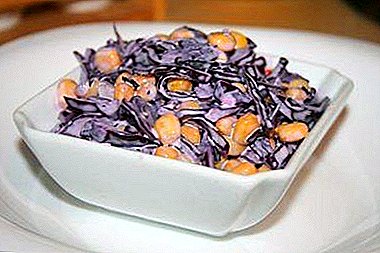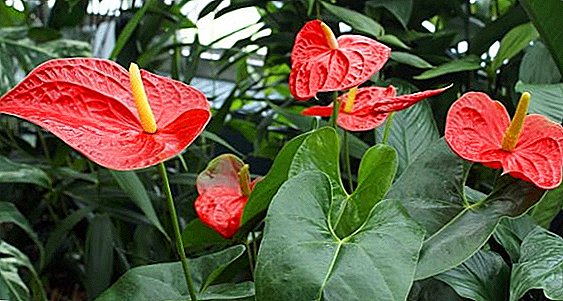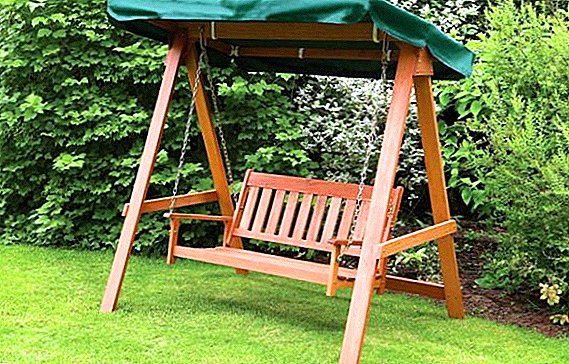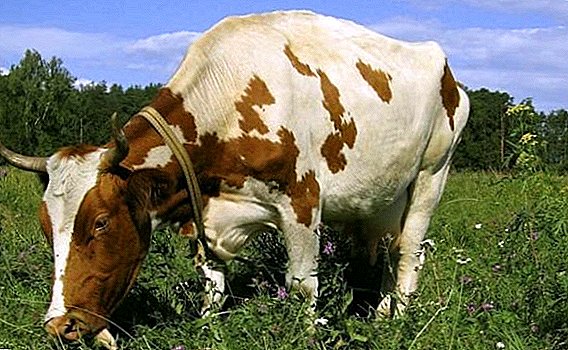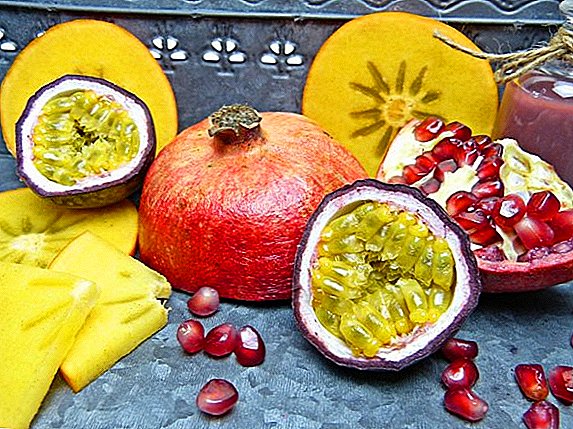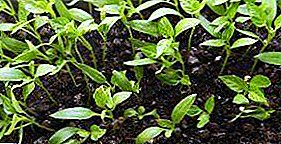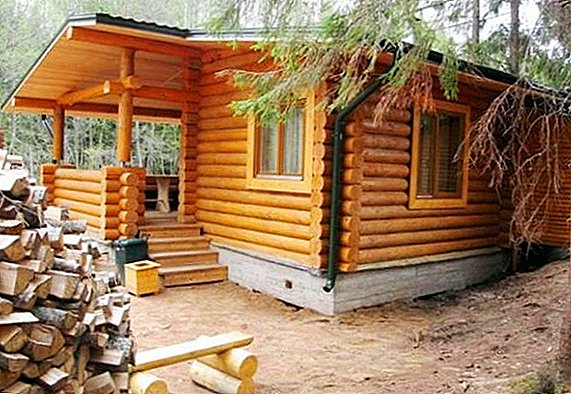 Many thought about creating a small cozy bathhouse on their own dacha. With its help, you can qualitatively take water treatments and recharge your batteries, as well as relieve stress.
Many thought about creating a small cozy bathhouse on their own dacha. With its help, you can qualitatively take water treatments and recharge your batteries, as well as relieve stress.
But at the stage of design and installation of structures, most are faced with serious problems. One of the most common of these is choosing the right material for the building.
To help you figure it out, we will look at this issue in detail, as well as determine the main advantages and disadvantages of various construction solutions for building a bath.
Basic requirements for a country bath
Arrangement of baths, as well as other structures, provides for the implementation of common architectural standards and building rules. However, our case is complicated by the need to comply with the construction of the general rules of fire safety.
Did you know? Bath with its roots in the 6th millennium BC. e. During this period in ancient Egypt, special steam rooms are available everywhere, accessible to all segments of the population.

So, in order to equip the bath at the dacha correctly, you must comply with the following requirements:
- Compliance with architectural standards: The most successful place for a bath is the most distant from all kinds of structures site. However, in modern conditions to achieve a complete lack of building structures near the bath will not be easy. Therefore, such a structure should be at a distance of not less than 8 meters from the residential building, no closer than 8 meters to the neighboring site and not less than 12 meters from the well. In addition, the construction site must be leveled with respect to the entire site, since on an elevation the bath will be overly reviewed, and in the lowlands annually suffer from spring flooding.
- Compliance with health standards: the building must be ventilated and equipped with a water drain system. Otherwise, it will lead to stagnation of air and moisture, and with this - the development of fungus and other pathogens.
- Compliance with fire safety standards: all parts of the structure that are subject to heat should be made of non-combustible materials. The part of the building in which the heating furnace is equipped must be additionally protected by insulating materials that prevent the ignition of the structure.
- Environmentally friendly building material: Bath - a place with high temperature and humidity, so the materials for its construction should be made to the maximum of natural and non-toxic components, without adding any synthetic compounds.
Video: fire requirements for the bath
Important! If the proximity to the neighboring section does not allow to equip a bath, the construction distance to it can be reduced to 1 meter, however this must be agreed with the neighbors, and their permission must be certified in writing by lawyers.
Advantages and disadvantages of a wooden bath
The most often bath is made of wood. Wood is quite simple to work with, so you can create almost any part of the structure, both bearing elements, and cladding.
Such structures are characterized by strength, and their shrinkage on the ground runs evenly, without the occurrence of cracks and fractures. In addition, the tree is resistant to moisture and temperature fluctuations, and also has high thermal insulation qualities, which makes this material almost perfect.
We advise you to read about how to build and arrange a bath.

However, he has a lot of minuses, first of all, it is:
- fragility;
- wooden baths require particularly careful compliance with fire safety standards;
- shrinkage lasts a long time and may be more than 10 cm;
- a wood bath needs at least 2 years to dry thoroughly;
- After drying, wooden structures must always be smoked.
Did you know? Finland - the leader in the number of steam rooms per capita. In a country with about 5 million of them, there are more than 2 million of them.
Pine
Pine is the most common tree in construction, so it is not surprising that baths are often built from this material. 
Pine has many advantages:
- the tree grows in almost any conditions, so it is one of the cheapest and most common materials;
- pine has a smooth and even trunk, which facilitates its processing;
- this wood is light but strong, rarely cracks, so such structures are reliable and give a slight shrinkage;
- pine contains a huge amount of aromatic resins, so water procedures in such baths are especially useful for general human health.
We recommend reading about what materials are for the fence, as well as how to make a fence of gabions, bricks, picket fence, chain-link mesh and a wicker wooden fence for the garden.
Pine has few minuses, but they are still there. First of all, this increased release of wood resin, therefore, in such baths, the resin from the walls will have to be cleaned over the next few years.
Also, the pine tree does not differ in resistance to various atmospheric manifestations, fungi and insects, therefore such a tree requires additional costs for the treatment with protective agents. 
Spruce
Spruce bathhouses are not less qualitative than from pine, but less common. As well as the coniferous species described above, spruce is also quite easy to process, practical and has a low price.
In addition, this material, like pine, is enriched with a variety of resinous compounds that can saturate the bath with aromas useful for the respiratory system.
However, designs from spruce in our open spaces are rare, since, in addition to the above described minuses, this conifer has less resistance to various atmospheric manifestations and fungi, and also gives greater shrinkage than pine. Therefore, such structures require not only constant treatment with protective agents, but also are short-lived. 
Cedar
Cedar plantings are not found in every region, therefore baths from this wood are built exclusively in Siberia, in the Urals. This material has the same positive qualities as the above described conifers, but it has several advantages.
First of all, it is a more aesthetic appearance of the structure. Cedar wood - with a pinkish-red middle and golden-pink hue of the outer layers, it gives the bath a more interesting look.
In addition, cedar has a high resistance to all kinds of fungi and other microorganisms, as well as to conditions of high humidity, therefore, such structures are more durable and less costly to maintain than pine or spruce.
The main disadvantages of this wood include:
- excessive resin shedding during the first few years after construction;
- high material cost.

Larch
Larch is a rather rare species, so this tree is rarely found as a building material. But despite this, with respect to coniferous brethren, this wood has several advantages:
- it is durable, reliable and durable material, so this bath will be able to stand for decades;
- Larch is resistant to all kinds of fungi and parasites, as well as moisture, so this wood does not require additional treatment with protective equipment.
The main disadvantage of larch can be called a high price, so baths from this tree can be found only in the zone of mass plantings of the tree. In addition, this wood has an excessively dense structure and does not differ in ease of processing. 
Oak
Oak is considered to be a unique material. Such wood has a noble shade and pattern on the cut, has high strength, resistance to moisture, temperature, fungus and rotting for decades.
You will probably be interested to know how to build a toilet, a cellar and a veranda, as well as how to make a brazier out of stone, a pergola, a gazebo, a blind area for the house and a concrete walkway.
However, this material is not considered the easiest to process, since it has an excessively dense structure. In addition, oak is a fairly weighty material, so these designs give a serious shrinkage. Do not forget about the high cost of oak, so this bath is possible only in the case of an unlimited budget for its construction. 
Aspen
Aspen is a less popular material for construction, since the ratio of price and quality of this wood is inferior to the above-listed varieties of wood. It is not easy to create a structure made of aspen, each individual tree has its own dimensions and shape, therefore, the construction of this wood is possible only after careful processing.
Do not forget that aspen is not resistant to various atmospheric manifestations and pests, so the tree will darken in a few years, and the building itself will become unusable in a few decades. But aspen has its advantages: the tree perfectly absorbs varnishes and paints; therefore, such a construction can be given to external aesthetics without even having special skills.
Did you know? In Ancient Rus, aspen was the most common material for building baths, since coniferous woods as a building material could only afford to know.

Blocks for the construction of baths
Buildings from the blocks are an excellent and inexpensive alternative to wood for arranging the steam room on its own plot. This material allows you to quickly create a solid structure that will last more than one year. In addition, all kinds of buildings from the blocks are particularly simple in the creation, as well as in the care, because every year they are gaining more and more popularity.
We recommend reading about how to cover the roof with metal tile and ondulin, as well as how to make a gable roof.The main advantages of the blocks:
- cheapness. Designs of even the most expensive types of blocks are much cheaper than structures made of any other material;
- low weight of structures, which contributes to the minimum shrinkage of the entire structure;
- the ease and speed of installation, so the steam rooms of the blocks can be created personally, not having specialized knowledge.

But there is such a material and its drawbacks. First of all, it is:
- lack of resistance to high humidity and sudden temperature changes, which reduces the durability of the blocks at times;
- the material does not have a low thermal conductivity, so such structures must be insulated;
- buildings of blocks require a solid foundation, a depth of at least 70 cm (in the northern regions - at least 1 meter);
- both internal and external walls of such premises require a mandatory finish.

Aerated concrete
Aerated concrete is a cellular concrete material made of cement, silica sand and special blowing agents. Dry components of aerated concrete are thoroughly mixed, and then poured into special forms and add water.
Under its influence, an active chemical reaction occurs, as a result of which the necessary structure of the material is created. To improve the strength, some brands of gas blocks are treated with steam in special autoclaves.
Today, there are a large number of types of aerated concrete on the market, differing both in their quality and conditions of use. The best option for a bath would be D500 brand blocks. They have the necessary strength to create durable single-storey structures.  The advantages of this material are many: ease of installation, low weight, durability, high fire safety. But there are also not less minuses: considerable hygroscopicity, rather high price (relative to other types of building blocks), the need for special expensive glue for laying blocks.
The advantages of this material are many: ease of installation, low weight, durability, high fire safety. But there are also not less minuses: considerable hygroscopicity, rather high price (relative to other types of building blocks), the need for special expensive glue for laying blocks.
Important! When choosing aerated concrete, preference should be given to material that has been pre-treated with high steam in autoclaves, since only in this case the blocks will have the necessary strength and moisture resistance.
Main technical characteristics of aerated concrete:
- strength, kg / cm sq. - 5-20;
- thermal conductivity, W / (m · K) - 0.15-0.3;
- volume weight, kg / m 3 - 200-600;
- frost resistance (number of cycles) - 50-75;
- shrinkage, mm / m - 1.5;
- water absorption,% - 45.
Gas silicate
Gas silicate can be called a more profitable analogue of aerated concrete. This material is made on the same principle as the previous one, but it contains quartz sand and a small amount of lime as a binder.
Unlike aerated concrete, in order to obtain a high-quality gas silicate, the blocks are necessarily subjected to high-pressure steam treatment. The material has the same advantages and disadvantages as aerated concrete, but from a technical point of view it loses to it.
When repairing a robot, many are looking for answers to such questions: how to remove old paint from the walls, how to glue different types of wallpaper, how to insulate window frames for the winter, how to install a light switch, a power outlet, and also how to install a flowing water heater and air conditioning system.
Since lime is part of the gas silicate, this block quickly absorbs moisture and is rapidly destroyed under its influence. Therefore, such surfaces require careful waterproofing and all associated additional costs. 
Main technical characteristics of gas silicate:
- strength, kg / cm sq. - 28-40;
- thermal conductivity, W / (m · K) - 0.1-0.2;
- volume weight, kg / m 3 - 480-720;
- frost resistance (number of cycles) - up to 50;
- shrinkage, mm / m - 0.3;
- water absorption,% - 47.
Foam concrete
Foam blocks are a rather inexpensive variant of cell concrete. They are made from a mixture of sand, cement and water, which are additionally enriched with foam from a special generator.
For the construction of the steam room, it is best to choose a material of grade D 600 or higher, since less durable foam concrete is used exclusively as a heater. Foam concrete is quite seriously inferior to the gas concrete or gas silicate described above with respect to technical characteristics, but their main advantage will be the price. 
Main technical characteristics of foam concrete:
- strength, kg / cm sq. - 10-50;
- thermal conductivity, W / (m · K) - 0.2-0.4;
- volume weight, kg / m 3 - 450-900;
- frost resistance (number of cycles) - up to 25;
- shrinkage, mm / m - 0.6-1.2;
- water absorption,% - 52.
Slag
Slag stone is a building material that is made on the basis of cement mortars, as well as slags - waste from coal production and other industries. This is a fairly cheap material, since its production often carries the same goal - to maximize the utilization of slag formations.
However, the cinder block is not the best choice for building a bath. Such blocks quickly enough and for a long time absorb moisture, and also do not differ in the high durability, especially in the conditions of the increased humidity.  Even with high-quality insulation, such a bath will function for no more than 15–20 years, after which serious repairs will be required.
Even with high-quality insulation, such a bath will function for no more than 15–20 years, after which serious repairs will be required.
Important! Slag stone is strictly prohibited to use as a building material immediately after production, since slags emit various toxic substances for quite a long time. Therefore, before use, it should be laid out in the open air for at least 1 year.
Sawdust can also be used as the main component in the production of cinder blocks; in this case, it is possible to obtain not only cheap, but also environmentally friendly material. To create single-storey structures, a material of a grade not lower than M 75 will be required, since less durable options are used exclusively as facade insulation.
Main technical characteristics of cinder block:
- strength, kg / cm sq. - 25-75;
- thermal conductivity, W / (m · K) - 0.3-0.5;
- volume weight, kg / m 3 - 500-1000;
- frost resistance (number of cycles) - up to 20;
- shrinkage, mm / m - 0;
- water absorption,% - 55.
Claydite
Lightweight aggregate blocks are almost complete, but a higher quality analogue of cinder blocks. This material is made of a cement mix, as well as expanded clay - clay of the fines fraction burned under special conditions. Expanded clay blocks have a lot of advantages relative to the remaining cell blocks.
First of all, it is environmental friendliness, low weight, which almost completely eliminates the risk of shrinkage. In addition, this material has a low percentage of water absorption, as well as low thermal conductivity, which makes it almost ideal for creating high-quality but inexpensive steam rooms.
If you do not know how to decorate your site, we advise you to read about how to make a waterfall, alpine slide, fountain, flower beds made of stones and wheel tires, a rose garden, rock arias, a dry stream.
However, the arrangement of the bath will require blocks of the brand M100-M150, as the less durable claydite-concrete is used solely as a facade insulation.  Main technical characteristics of keramsit concrete:
Main technical characteristics of keramsit concrete:
- strength, kg / cm sq. - 50-150;
- thermal conductivity, W / (m · K) - 0.15-0.45;
- volume weight, kg / m 3 - 700-1500;
- морозостойкость (кол-во циклов) - до 50;
- усадка, мм/м - 0;
- одопоглощение, % - 12.
Керамоблок
Керамоблок является не столь распространённым материалом в современном строительстве, нежели вышеперечисленные, однако часто можно увидеть бюджетную баню именно из него. Keramoblocks are quite environmentally friendly, as they include only cement, sand, ceramic powder and water.
As well as the above materials, such blocks are distinguished by low cost, ease of laying, low weight, and durability. The main disadvantage of the material is a higher thermal conductivity.  In addition, you should not forget about the fragility of the material, so when installing a bath of ceramic blocks, be sure that the calculated amount of material will have to be increased by at least 5%. That is why the quality of this is not worth saving, the brand should not be below M100.
In addition, you should not forget about the fragility of the material, so when installing a bath of ceramic blocks, be sure that the calculated amount of material will have to be increased by at least 5%. That is why the quality of this is not worth saving, the brand should not be below M100.
Main technical characteristics of the ceramic block:
- strength, kg / cm sq. - 25-175;
- thermal conductivity, W / (m · K) - 0.08-0.18;
- volume weight, kg / m 3 - 650-1000;
- frost resistance (number of cycles) - more than 50;
- shrinkage, mm / m - 0.3;
- water absorption,% - 10-15.
Important! Constructions of blocks provide for additional reinforcement of masonry with metal mesh every 2-3 rows, otherwise the durability of the structure is reduced by several times. This feature must be taken into account when creating estimates.
Brick bath
Brick bath is one of the best alternatives for arranging a steam room at home.  With the help of bricks, you can create a reliable and high-quality design that will delight their owners for many decades. That is why an increasing number of lovers of life-giving couple give preference to this particular material.
With the help of bricks, you can create a reliable and high-quality design that will delight their owners for many decades. That is why an increasing number of lovers of life-giving couple give preference to this particular material.
The main advantages of the brick sauna are:
- reliability and durability;
- low water absorption coefficient. This contributes not only to the durability of the structure, but also helps to resist the development of fungi and dangerous bacteria on the surface of the walls;
- versatility. Brick makes it possible to use it for almost any purpose: from the erection of walls, to the arrangement of the furnace;
- exclusivity. With the help of brickwork it is possible to create a design of any architectural shape and size;
- simplicity. The brick is easy to use and maintain, besides it is quite aesthetic and does not require mandatory interior and exterior decoration;
- high fire safety. Even at critical temperatures, a brick cannot ignite, which makes it an ideal (from the point of view of fire safety) material;
- environmental friendliness. The composition of the brick includes the maximum amount of natural components.
- high price. Even the simplest brick construction will be noticeably more expensive than any wooden or block construction;
- high thermal conductivity. This adversely affects the fuel consumption, as well as the overall rate of heating of the bath and the achievement of optimal temperatures.
Traditionally, for the construction of baths in modern construction practice, red brick is used. For the construction of steam rooms use several of its types: although they carry a common task, they need to be used exclusively for highly specialized purposes.
These are the so-called pipe, ceramic and fire-resistant types. Next, we consider in more detail the necessity and tasks of each of these materials..
Important! Qualitatively baked brick has a uniform shade throughout the volume, and when struck with a hammer it characteristically “rings”. In the absence of these signs, the material must be discarded.

Pipe (corpulent)
The task of the tube brick is the removal of gaseous waste arising from the combustion of the fuel during the kindling of the bath furnace. This is perhaps one of the few building materials that is able to cope with such a task without being exposed to the negative effects of sudden temperature changes.
It is made from a special clay mixture, subject to semi-dry pressing. As a result, it is possible to obtain a product with high hygroscopicity, smooth surface and strict dimensions. This contributes to the creation of an ideal tightness for the removal of combustion derivatives.
Today, there are a lot of varieties of such bricks on the market, however, only corpulent pipe bricks will be most suitable. Despite the higher price of relatively hollow, in conditions of elevated temperatures to apply excessively porous materials is not recommended, as this may cause its destruction.  However, the completeness of the material is not the key to a reliable chimney. Under conditions of elevated temperatures, strength plays a decisive role in preserving the integrity of the structure, therefore, the best choice would be a brick not lower than the M200 grade.
However, the completeness of the material is not the key to a reliable chimney. Under conditions of elevated temperatures, strength plays a decisive role in preserving the integrity of the structure, therefore, the best choice would be a brick not lower than the M200 grade.
The main technical characteristics of bricks for pipes:
- strength, kg / cm sq. - 75-300;
- thermal conductivity, W / (m · K) - 0.3-0.8;
- volume weight, kg / m 3 - 1500 - 1900;
- frost resistance (number of cycles) - more than 75;
- heat resistance, ° C - up to 1000;
- shrinkage,% - 5;
- water absorption,% - 10.
Ceramic (pipe)
Ceramic pipe brick is a kind of hollow brick, which is used for the construction of buildings no higher than 2-3 floors. It is made from special clay solutions that are subject to high-temperature heating in furnaces at a temperature of about 1000 ° C.
This building material is practically no different in composition from solid ceramic brick and has the same advantages and disadvantages.  An advantageous advantage of such a brick is low cost. Each of the forms for the production of material has small bulges, which creates artificial cavities in each brick, resulting in a reduction in the amount of raw materials for production, and with this - the final unit price.
An advantageous advantage of such a brick is low cost. Each of the forms for the production of material has small bulges, which creates artificial cavities in each brick, resulting in a reduction in the amount of raw materials for production, and with this - the final unit price.
In addition, the presence of cavities improves the insulating ability of the product, so the steam room of hollow brick heats up much faster than full-bodied. There are such bricks and many drawbacks.
Did you know? The largest steam room is located in the German town of Sinsheim, its area is 160 square meters. meters
First of all, it is low strength, as well as the ability to collapse under the influence of high moisture. This leads to an increase in the cost of high-quality finishing and vapor barrier material, otherwise the durability of the structure is reduced significantly. The best type of hollow ceramic brick for the construction of a bath will be a grade not lower than M200.  The main technical characteristics of ceramic hollow brick:
The main technical characteristics of ceramic hollow brick:
- strength, kg / cm sq. - 75-300;
- thermal conductivity, W / (m · K) - 0.2-0.5;
- volume weight, kg / m 3 - 1300 - 1500;
- frost resistance (number of cycles) - more than 75;
- heat resistance, ° C - up to 1000;
- shrinkage,% - 5;
- water absorption,% - 10.
Did you know? In the old days, in order to determine the quality of bricks, 600 bricks were placed on a wooden pallet, after which the pallet was lifted to a height of about 2 meters, and then dropped sharply on the ground. If at least one broke, the whole lot was rejected.
Fireproof (chamotte)
Fire-resistant, or shamotny, the brick is used as for stone, and wooden baths as a basis for production of the furnace. This is the only building material that can withstand the direct effects of fire.  It is made from a mixture of special refractory clay and various additives (coke, graphite powders, large quartz kernels, etc.), calcined at a temperature of 1300 ... 1500 ° C. It gives the chance to receive resistant to sharp temperature drops and durable material.
It is made from a mixture of special refractory clay and various additives (coke, graphite powders, large quartz kernels, etc.), calcined at a temperature of 1300 ... 1500 ° C. It gives the chance to receive resistant to sharp temperature drops and durable material.
On the modern market there is a mass of various types of fireclay bricks (ShA, ShB, ShAK, ShUS, ShV, PV and PB). For the construction of a home steam room, the most profitable materials will be ShB-5 and ShB-8. This is the so-called fireclay brick of class B, capable of withstanding a maximum temperature of 1,400 ° C.
This is one of the cheapest types of refractory bricks, but despite this, this choice will be an ideal option in terms of price and quality.
The main technical characteristics of refractory bricks:
- strength, kg / cm sq. - 100-150;
- thermal conductivity, W / (m · K) - 0.6-0.9;
- volume weight, kg / m 3 - 1800-2000;
- frost resistance (number of cycles) - up to 50;
- heat resistance, ° C - up to 1500;
- shrinkage,% - 5;
- water absorption,% - 5-8.

Important! For laying fireclay bricks using heat-resistant mixture or refractory clay. Simple cement mortars instantly crack and collapse under the influence of high temperatures.
Stone bath: the pros and cons
Stone in construction is the best option for those regions where to acquire wood is not so easy. In addition, the stone bath looks spectacular and unusual, which will definitely help to create a truly unique steam room.
The advantages of the stone mass, above all, it is:
- low price;
- accessibility;
- high fire safety;
- durability;
- low shrinkage ratio.

These include:
- technological complexity. Due to the uneven size of the stones, it is much more difficult to create a building of the correct shape than from brick or wood;
- high cost. Even the most expensive wooden bath will be much cheaper than stone, as such a steam room requires a large amount of related materials;
- high thermal conductivity. The stone keeps the heat warm, so for a quality ignition of the bath it takes an order of magnitude more fuel than for steam rooms made of other materials;
- low gas permeability. Stone bath requires a high-quality ventilation system in order to avoid air stagnation;
- excessive overall design. The walls of the stone bath are constructed with a thickness of at least 75 cm, which adversely affects the amount of space needed for construction.
Optimal choice
Today, in today's market conditions, choosing the optimal type of material for a home bath is not so easy, since for most domestic consumers the question of the appropriateness of the money spent is not only urgent, but is also a dominant factor in budget planning.
Let's analyze all of the above and find out where is the best place to build a bath, and what materials it is better to refuse. The highest quality construction is a wooden sauna (pine, spruce).
A wooden bath will perfectly cope with all the duties assigned to it, will give a lot of positive emotions, as well as pleasant sensations. In addition, this steam room looks very colorful and will last for several decades.
Video: how to choose materials for the construction of baths
In the absence of extra funds, it is possible to build a bathhouse from building blocks - you should pay your attention to expanded clay concrete. This material has not only low thermal conductivity and durability, but also makes it possible to quickly and inexpensively create a full-fledged steam room of any size and height.
However, in the pursuit of cheapness, you should not choose the cheapest materials, since such constructions will not only last for a couple of decades, but also cause a lot of trouble in the content. Therefore, a bath of aspen, foam blocks or cinder block to build on your site is not worth it.
In this case, even with a sparing mode, after 10–15 years, your steam room can become completely unsuitable. Properly equipped bath - this is the best that can please the cold winter sometimes in their own summer cottage.
Today, there are many materials with which you can create a complete steam bath with just your own hands in just a few months. However, if you do not have extra money in stock, building a bath is best postponed for a later time, since a cheap steam room will soon become a serious headache.
Reviews from the network







